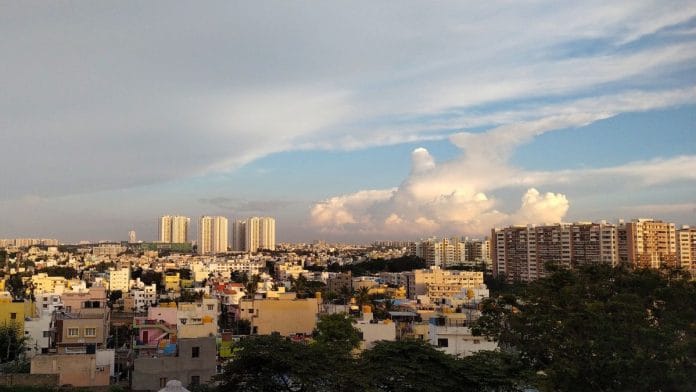New Delhi: When it comes to air pollution, Delhi might retain its spot as one of the worst cities in India, but Bengaluru saw an unusual spike in air pollution levels on New Year’s Day. The southern metropolis’s air quality was 63 percent higher than average in the wee hours of 1 January, between 12 and 3 am, with PM2.5 levels reaching 56.05 micrograms per cubic meter (μg/m³).
PM2.5, also known as fine particulate matter, are air pollutants with a diameter of 2.5 micrometers or less.
Bengaluru’s average air quality in December 2024 was only about 34.33 μg/m³, but the spike on New Year’s Day was attributed to higher firecracker use, according to Delaware-based global air quality monitoring and management start-up Airvoice.
A spike of 63.26 percent marks a concerning trend for a city otherwise known for its moderate air quality, according to a 31 January report by Airvoice.
“Bengaluru’s sudden pollution surge serves as a wake-up call for policymakers and citizens alike,” Col. Ashwini K. Channan, CEO, Airvoice India, said in a statement. “We need sustainable solutions and behavioral changes to ensure celebrations don’t come at the cost of public health.”
Released Friday, Airvoice’s report documented the PM2.5 levels in major Indian and global cities on New Year’s Eve, and compared them with average December levels in a bid to understand the effect of firecrackers.
Delhi remained the most polluted city in India on New Year’s Eve, with PM2.5 levels reaching 222.65 μg/m³. This was four times the PM2.5 levels in Bengaluru on New Year’s Eve.
Meanwhile, the average air quality every night in December was 203.41 μg/m³ in Delhi, implying there was a 9.46 percent increase in PM2.5 levels on New Year’s Eve compared to other December nights.
This indicates that the New Year’s Eve (NYE) firecracker-induced spike wasn’t as high in Delhi as in cities like Bengaluru, or even Berlin. The German city saw a 380 percent increase in PM2.5 levels from an average of about 10.91 μg/m³ to 52.41 μg/m³ on NYE.
Other global cities like London saw very mild spikes in their PM2.5 concentrations on New Year’s Eve, from 7.5 μg/m³ on normal December days to 7.7 μg/m³ on New Year’s Eve. This is slightly above the World Health Organisation’s mandate of five μg/m³ as the safe limit of PM2.5 concentration in the air.
New York and San Francisco, on the other hand, saw spikes of 75 and 79 percent, respectively, in their PM2.5 levels. But their average numbers did not go beyond 20 μg/m³, which is still lower than the average in India cities.
Also Read: Researchers tracking pangolins stunned by rare sight—a rusty-spotted cat in Purulia forest
Air pollution in Mumbai, Kolkata
Mumbai is the Indian city with the most air pollution after Delhi, with a PM2.5 concentration of 69.20 μg/m³ on New Year’s Eve, which is still three times less than Delhi. But Mumbai, too, like Delhi, did not see a very high spike due to firecrackers, with the average PM2.5 levels throughout December being 64.33 μg/m³.
Kolkata had pollution levels slightly lower than those of Mumbai. It witnessed an odd trend—the average air quality in December was quite high at 92.64 μg/m³, but on New Year’s Eve, it was much lower at 63.48 μg/m³. So while Kolkata was right behind Mumbai in terms of New Year’s Eve air pollution in India, the air was better in Kolkata during New Year’s Eve compared to the average December night air quality in the city.
The analysis by Airvoice said that “despite a stringent firecracker ban in Delhi imposed by the Supreme Court and upheld by Delhi government”, air pollution continues to affect the city’s residents. This calls for “structural changes”, the report said. However, the most worrying trend pointed out by the report is the data coming from Bengaluru.
(Edited by Radifah Kabir)






